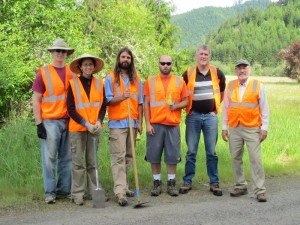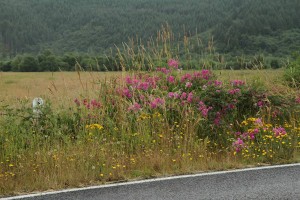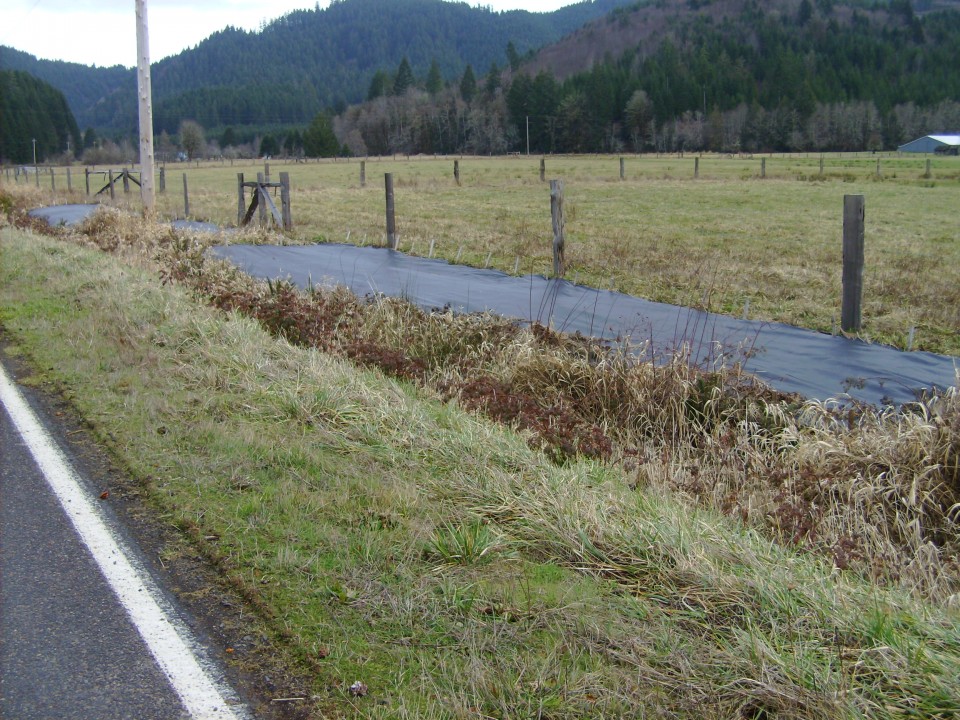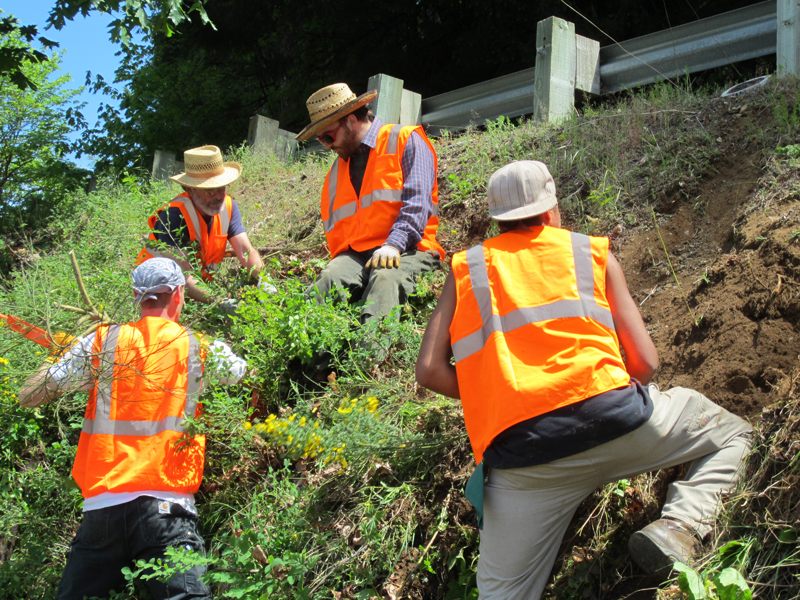I was amazed that when I woke up this morning, my back and shoulders weren’t very sore, just my forearms. That was after a full day of watershed restoration work near Fish Creek, one of the salmon habitat streams in the Siuslaw Watershed in Western Lane County.

A few of the 17 volunteers who stepped forward: 5 employees of Mountain Rose Herbs, 10 residents of the community and 2 volunteers from Beyond Toxics, including Carlos Barrera (far right).
I had spent the day – with sixteen other dedicated folks – pulling and bagging invasive weeds because we want to keep our watersheds pesticide free. Ten were residents from Triangle Lake who care deeply about the health of the people in their community; five were from our fabulous supporter and business partner Mountain Rose Herbs and two from Eugene (including me)!
Did you know that Oregon’s state and local governments sprays thousands of gallons of fish-killing pesticides along every highway and byway? This old pesticide-dependent paradigm is supposed to make a “vegetation free zone.” Imagine the hundreds of thousands of miles of the public’s right-of-way poisoned throughout the spring, summer and early fall, year after year! Everything underneath the spray nozzle of the pesticide truck becomes blackened vegetation and dead soils, a place that is only hospitable to more invasive weeds. The invasives grow back quickly and continue to spread, which creates a never-ending cycle of counterproductive practices and bad outcomes. The new paradigm involves removing only the invasive vegetation – mechanically with mowers and cutters and by hand.

No Spray Zones encourage beautiful, beneficial plants to flourish.
These are No Spray zones. Our public right-of-way is kept pesticide-free and the good vegetation is encouraged to grow. Yesterday, I saw wild daisies, native grasses, lupine, Oregon grape and many other beneficial plants. These beautiful plants are needed for several reasons: as animal habitat, to crowd out any invasive weeds and to filter the pollution coming off roadways.
There are three No Spray model projects in our State, all supported by Beyond Toxics. In Lane County, we have the No Spray project on Highway 36 in the Triangle Lake valley. In Lincoln County, our friends Concerned Citizens for Clean Air maintain 25 miles of Highway 101 without the use of pesticides. Our supporters in Williams, Josephine County hold the annual Williams Mow Day, keeping pesticides out of the Williams River, which feeds into the Wild Illinois.

Your community could also start a No Spray project to protect your local streams and rivers! It only takes a couple of days per year, but the results are impressive. Check out the pictures (above) of what a No Spray scenic corridor looks (left) like compared to the Pesticide Poisoned zones (right). Let’s move Oregon away from the killing paradigm to an exemplary life-supporting model for the nation!
Perhaps you live near one of Oregon’s county and state roads that have been built in scenic corridors, like the Siuslaw River, McKenzie River, the Santiam River, the Pudding or the Rogue River. Beyond Toxics can support you if you’d like to start a No Spray model project in your community! Just give us a call (541-465-8860) or email us! Together we can keep pesticide poisons from seeping into our precious watersheds, the source of our drinking water and the habitat for Oregon’s native fish.

Shade cloth laid near Horton Road as part of a pilot project to control a dense patch of noxious weeds.
If you are a business owner, you can help sponsor these projects by assembling employee work parties and making a donation to cover the cost of supplies. Horton Road Organics farm, for example, sponsored the shade cloth (see photo above) that we are using to kill invasive weeds on Highway 36 near Horton Road!
Lisa Arkin, Executive Director





